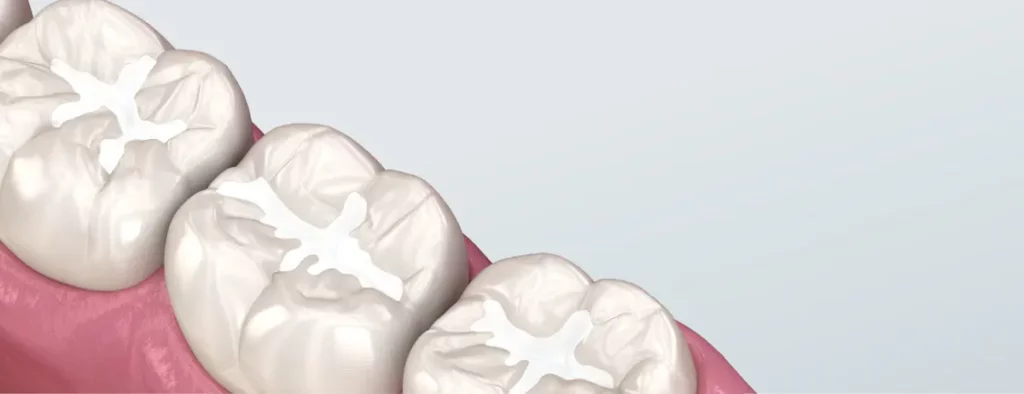
What are fissures? These are small depressions of natural origin in the center of chewing teeth. This is absolutely normal, but it brings some problems – it is not so easy to clean fissures on your own at home, especially in the case of children who are not yet so serious about brushing their teeth.
The impossibility of cleaning fissures can lead to their growth and the formation of caries – it is called fissure. To avoid such unpleasant consequences, recently more and more people are doing a fissure sealing procedure – this is especially true for children, since they are not good enough at brushing their teeth.
Fissure sealing is a kind of sealing with a special composition with silver ions, which allows you to isolate the surface of the teeth from contact with food and microbes living in the oral cavity. As a result, the teeth become even and smooth.
Indications and contraindications
One of the main reasons why children undergo fissure sealing is the inability to carry out proper dental hygiene. But there are other indications:
- genetics – predisposition to certain dental diseases;
- too deep grooves on the teeth;
- already appeared fissure caries;
- focal demineralization of enamel.
This procedure also has contraindications, although they are mainly associated with the lack of the need for it:
- the age of the teeth is from 4-5 years – if during this time fissure caries has not manifested itself, then the teeth are cleaned sufficiently, and nothing threatens them;
- wide grooves – the grooves are wide enough to allow good access to cleaning them, so sealing is not useful.
In all cases, the decision on the need and possibility of fissure sealing is made by the dentist.
How is the procedure?
There are two main methods of fissure sealing – invasive and non-invasive.
- Invasive. The groove is pre-expanded – this is necessary if it is so deep that the bottom cannot be seen. Before expanding, the doctor must make sure that there are no signs of caries in the oral cavity.
- Non-invasive. Typically, such sealing is carried out on milk teeth and makes sense in the presence of shallow fissures. A non-invasive sealing method is only possible if the entire sulcus is clearly visible.
With any sealing method, the tooth is first hygienically cleaned and disinfected. Then, after drying its surface, if necessary, the groove deepens. It is fixed with sealant and strengthened.
The payouts may vary. Universal option – transparent material. It is invisible and allows the doctor to control the condition of the fissure. Colored sealant is also often used – such a composition is more popular with children and is more often used on milk teeth. Colored patches also have their own advantage – the dentist immediately sees the treated areas. In addition, the abrasion of the colored sealant is easier to track. Let the child choose what he likes more!
